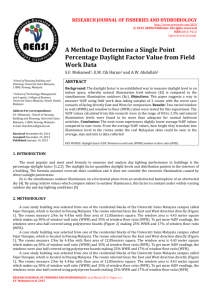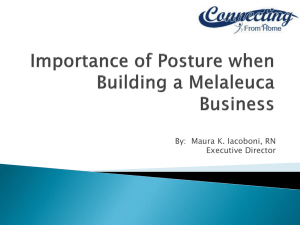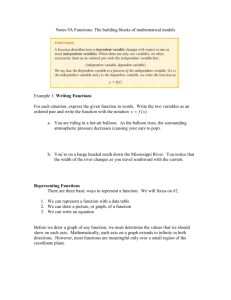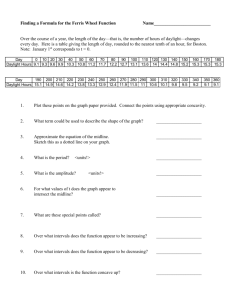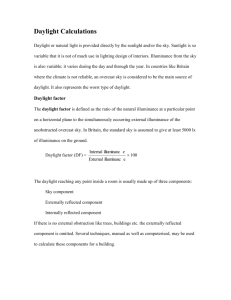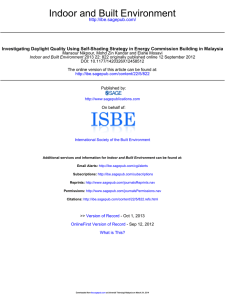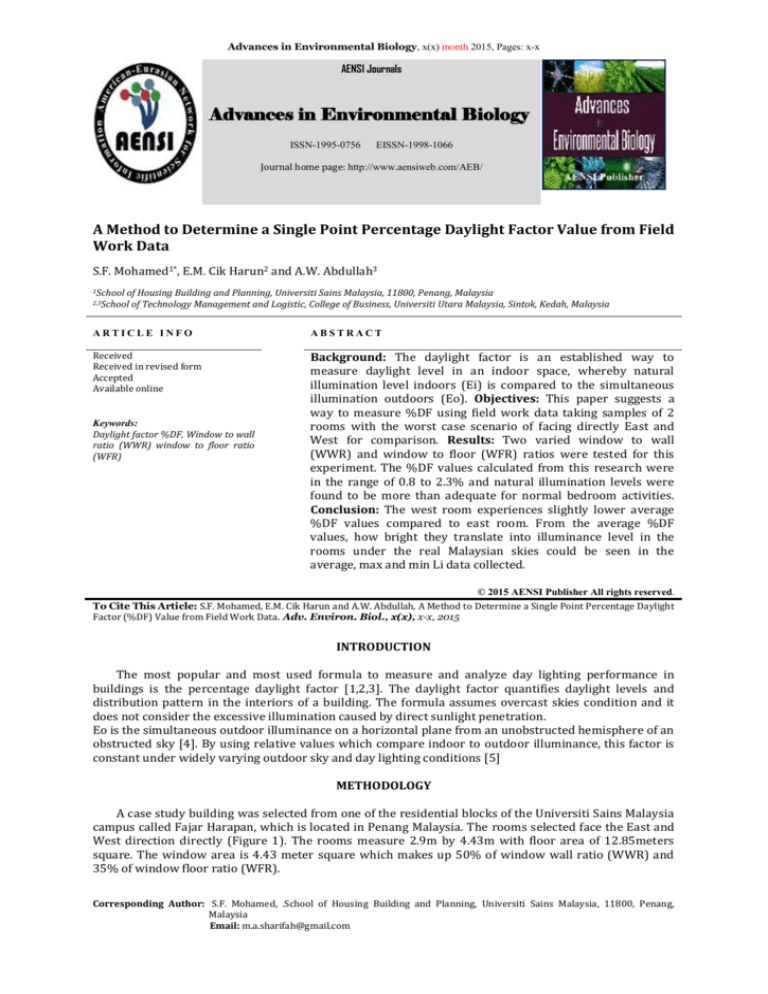
Advances in Environmental Biology, x(x) month 2015, Pages: x-x
AENSI Journals
Advances in Environmental Biology
ISSN-1995-0756
EISSN-1998-1066
Journal home page: http://www.aensiweb.com/AEB/
A Method to Determine a Single Point Percentage Daylight Factor Value from Field
Work Data
S.F. Mohamed1*, E.M. Cik Harun2 and A.W. Abdullah3
1School
of Housing Building and Planning, Universiti Sains Malaysia, 11800, Penang, Malaysia
of Technology Management and Logistic, College of Business, Universiti Utara Malaysia, Sintok, Kedah, Malaysia
2,3School
ARTICLE INFO
ABSTRACT
Received
Received in revised form
Accepted
Available online
Background: The daylight factor is an established way to
measure daylight level in an indoor space, whereby natural
illumination level indoors (Ei) is compared to the simultaneous
illumination outdoors (Eo). Objectives: This paper suggests a
way to measure %DF using field work data taking samples of 2
rooms with the worst case scenario of facing directly East and
West for comparison. Results: Two varied window to wall
(WWR) and window to floor (WFR) ratios were tested for this
experiment. The %DF values calculated from this research were
in the range of 0.8 to 2.3% and natural illumination levels were
found to be more than adequate for normal bedroom activities.
Conclusion: The west room experiences slightly lower average
%DF values compared to east room. From the average %DF
values, how bright they translate into illuminance level in the
rooms under the real Malaysian skies could be seen in the
average, max and min Li data collected.
Keywords:
Daylight factor %DF, Window to wall
ratio (WWR) window to floor ratio
(WFR)
© 2015 AENSI Publisher All rights reserved.
To Cite This Article: S.F. Mohamed, E.M. Cik Harun and A.W. Abdullah, A Method to Determine a Single Point Percentage Daylight
Factor (%DF) Value from Field Work Data. Adv. Environ. Biol., x(x), x-x, 2015
INTRODUCTION
The most popular and most used formula to measure and analyze day lighting performance in
buildings is the percentage daylight factor [1,2,3]. The daylight factor quantifies daylight levels and
distribution pattern in the interiors of a building. The formula assumes overcast skies condition and it
does not consider the excessive illumination caused by direct sunlight penetration.
Eo is the simultaneous outdoor illuminance on a horizontal plane from an unobstructed hemisphere of an
obstructed sky [4]. By using relative values which compare indoor to outdoor illuminance, this factor is
constant under widely varying outdoor sky and day lighting conditions [5]
METHODOLOGY
A case study building was selected from one of the residential blocks of the Universiti Sains Malaysia
campus called Fajar Harapan, which is located in Penang Malaysia. The rooms selected face the East and
West direction directly (Figure 1). The rooms measure 2.9m by 4.43m with floor area of 12.85meters
square. The window area is 4.43 meter square which makes up 50% of window wall ratio (WWR) and
35% of window floor ratio (WFR).
Corresponding Author: S.F. Mohamed, .School of Housing Building and Planning, Universiti Sains Malaysia, 11800, Penang,
Malaysia
Email: m.a.sharifah@gmail.com
2
S.F. Mohamed et al, 2015
Advances in Environmental Biology, x(x) Month 2015, Pages: x-x
To get more %DF readings, the windows were also half covered using polystyrene boards (Figure 2)
making 25% WWR and 17% of window floor ratio (WFR).
Fig. 1: Fajar Harapan : Plan and section of investigated rooms and probes locations
Indoor illumination were taken at mid points of east and west rooms (Le and Lw) using luxmeter
probes located 1m above floor level. Readings were logged every 10 minutes using a data logger
simultaneously with an outdoor weather proof light probe (Lo). Similar techniques were carried out with
the window areas covered by half. All measurements were carried out from in March. March days were
chosen as the sun path for the locality of Penang is more directly perpendicular to the room’s orientation.
Fig. 2: East and West room position and windows shape.
RESULTS AND DISCUSSION
Indoor illumination at the East room usually peaked at around 9am while in the West room at around
5pm and this is an indication of some direct sunlight penetration according to the sun’s location and
altitude at the particular times. In the field work daylight factor calculations ie Le/Lo X 100 and Lw/Lo X
100 the readings which were seen to have the influence of direct sunlight were disregarded . This is
because the daylight factor calculations do not consider the component from direct sunlight and assumes
completely uniform and overcast skies. Readings, which were too early in the morning and too late in the
evening, were also disregarded due to the skies not being uniformly illuminated. Only readings from
10.30am to 3.30 pm (Figure 4) are considered as those are the approximate times that direct sunlight
penetration do not occur in both rooms. This duration is derived through observation and pattern of data
from field work
2
S.F. Mohamed et al, 2015
Advances in Environmental Biology, x(x) Month 2015, Pages: x-x
CONCLUSION
Table 1 below summarizes the data collected and described above. It could be seen that the west
room experiences slightly lower average %DF values compared to east room. From the average %DF
values, how bright they translate into illuminance level in the rooms under the real Malaysian skies could
be seen in the average, max and min Li data collected. Data on Lo, on the other hand describe the high
illumination of the Malaysian skies. Here in Malaysia, 1%DF and even 0.5% DF may be sufficient for
activities in a residential room like resting, reading or just taking a nap.
Table 1: Natural Illumination Level and daylighting factor
East Room 6 Days (10:30am - 3:30pm)
Li (lux)
WWR
min
max
50% (10 - 15 Mar)
586.67
2104.33
25% (16 - 21 Mar)
276.33
965.33
Difference
West room 6 Days (10:30am - 3:30pm)
Li (lux)
WWR
min
max
50% (10 - 15 Mar)
508.17
742.17
25% (16 - 21 Mar)
106.17
353.83
Difference
ave
952.37
515.39
Lo (klux)
min
28.587
13.699
max
52.359
41.714
Ave
42.108
29.112
DF (%)
min
1.25
0.63
0.62
max
5.26
2.41
2.85
ave
2.28
1.23
1.05
ave
612.72
224.85
Lo (klux)
min
28.587
13.699
max
52.359
41.714
Ave
42.108
29.112
DF (%)
min
1.27
0.28
0.99
max
4.24
1.62
2.62
ave
2.26
0.82
1.44
ACKNOWLEDGEMENT
The autors thanks Opik Taopiqurrohman, Agung Restu Susanto, Ube, Dedi, and Finy for their dedicated
work in collecting data used in this article as a part of the objective of our research for rehabilitating the
degraded peat land areas.
REFERENCES
[1] Brophy, J.J., D.J. Boland and E.V. Lassak, 1989. Leaf Essential Oil of Melaleuca and Leptospermum
Species from Tropical Australia., pp: 193-203.
[2] Brophy, J.J and J.C. Doran, 1997. Essential Oil of Tropical Asteromyrtus, Callistemon, and Melaleuca
Species: In Search of Interseting Oils with Commercial Potential. ACIAR Monograph No. 40.
Australian Centre for International Agricultural Research, Canberra, Australia., pp: 10-22.
[3] Budiadi, Ishii, H.T., S. Sunarto, Y. Kanazawa, 2005. Variation in Kayu Putih (Melaleuca leucadendron
UNN) oil quality under different farming system in Java, Indonesia. Eurasian J. For. Res., 8(1): 15-20.
[4] Carson, C.F., T.V. Riley, 1995. Antimicrobial activity of the major components of the essential oil of
Melaleuca alternifolia, Dept. of Microbiology, Univ. of Western Australia. J. App. Mic., 78(3): 264-9.
[5] Clark,
J.,
2005.
Immiscible
liquids
and
steam
distillation.
Chemguide.
www.chemguide.co.uk/physical/phaseeqia/immiscible.html. Acessed.
[6] Cuong, N.D., T.T. Xuyen, O. Motl, K. Stransky, J. Presslova, Z. Jedlickova and V. Sery, 1994.
Antibacterial properties of Vietnamese cajuput oil. J. Essent. Oil Res., 6(1): 63-67.
[7] Doran, J.C., 1998. Cajuput oil. Medicinal and aromatic plants – Industrial profile -, Tea tree, The genus
Melaleuca. Harword Acad. Pub., Amsterdam.
[8] Gertsch, J., M. Leonti and S. Reduner, 2008. β-caryophyllene is a dietary cannabinoid, Proceed of the
National Acad. of Sci. of the USA. 105(26): 9099-9104.
[9] Khare, C.P., 2007. Indian Medicinal Plants : An Illustrated Dictionary. Springer-Verlag. Berlin
Heidelberg. ISBN 978-0-387-70640-5.
[10] Kumar., 2005. Chemical composition of the essential oil from fresh leaves of Melaleuca leucadendron
L. from North India. J. Essent. Oil Bear Plants. 8(1): 19-22.

